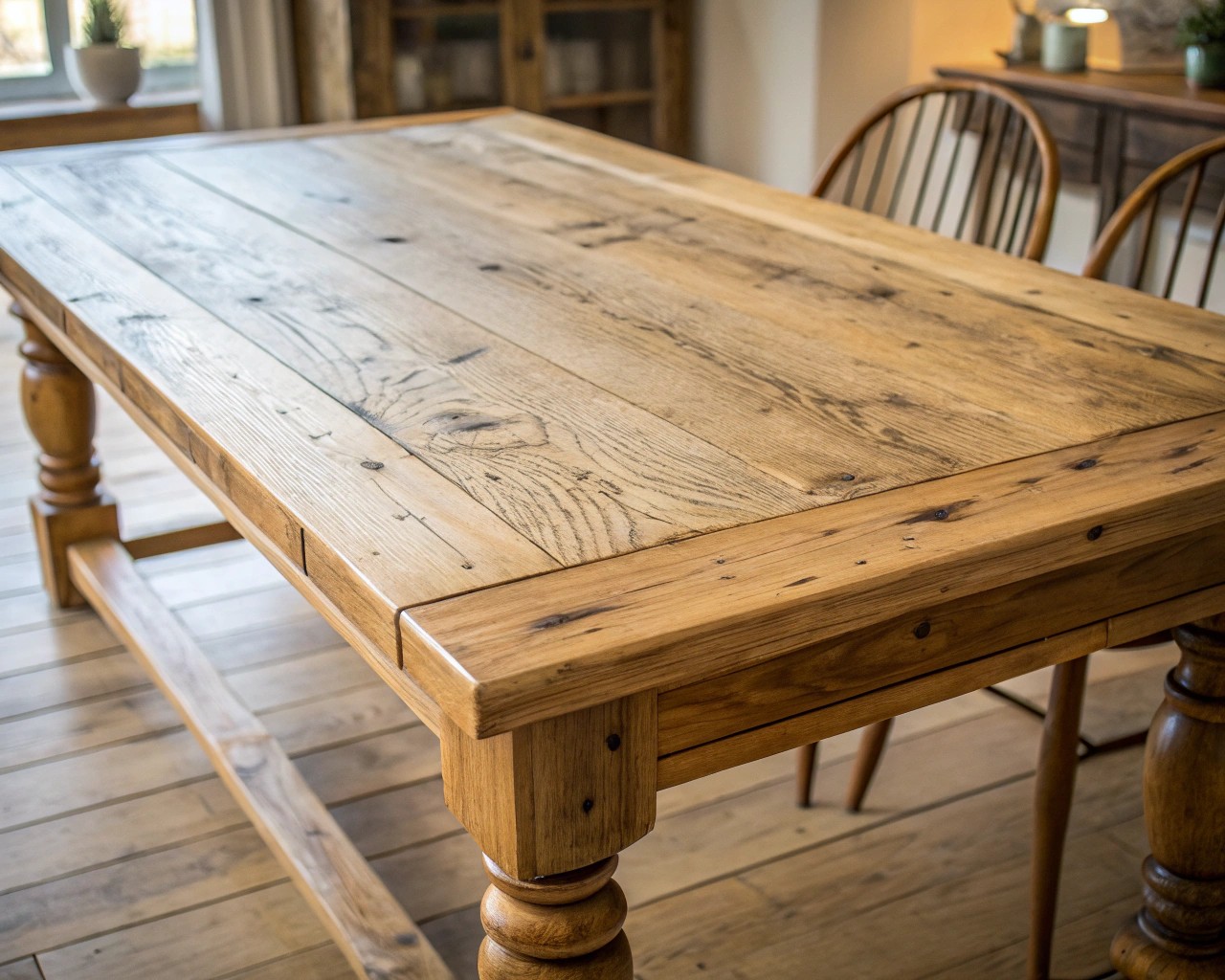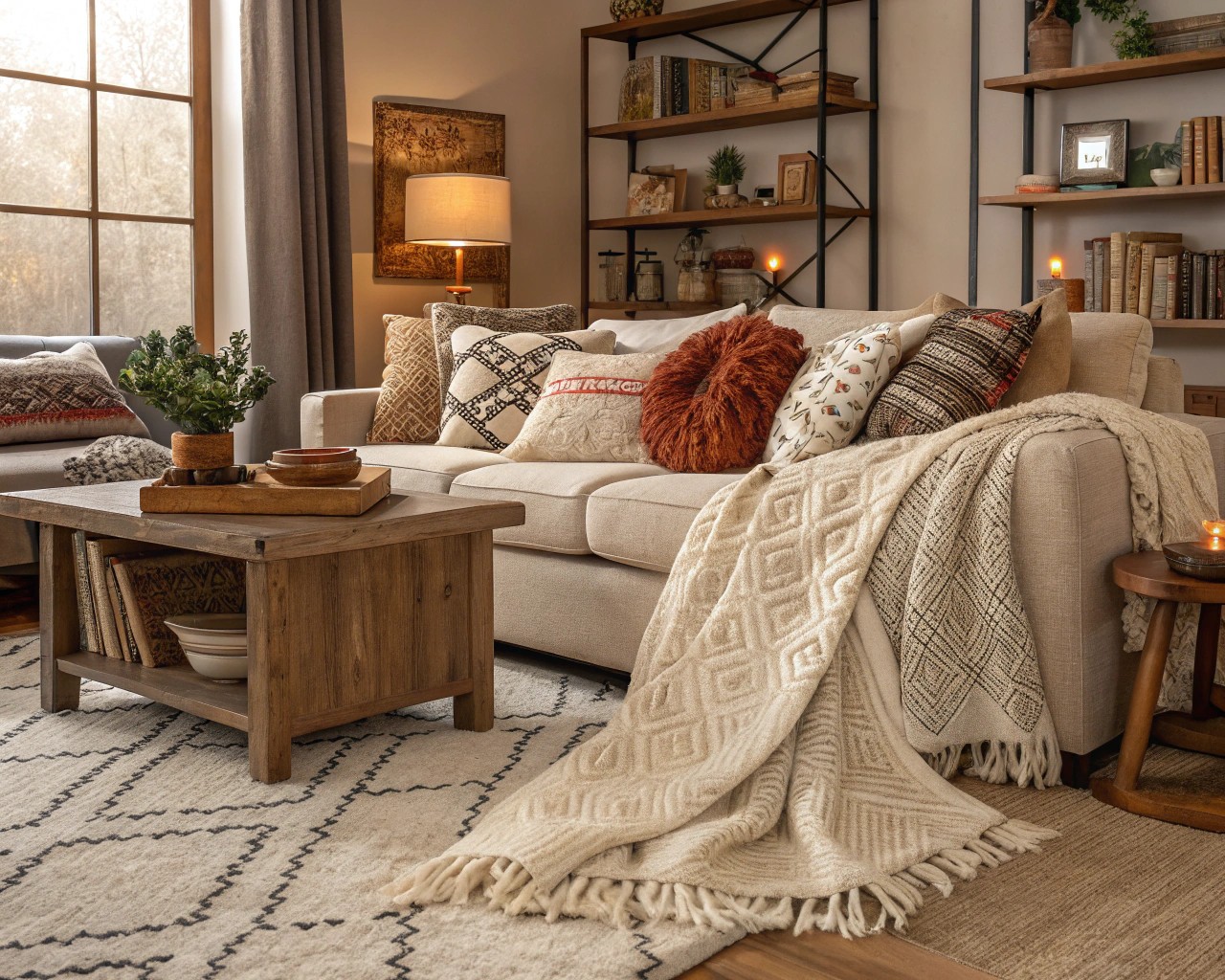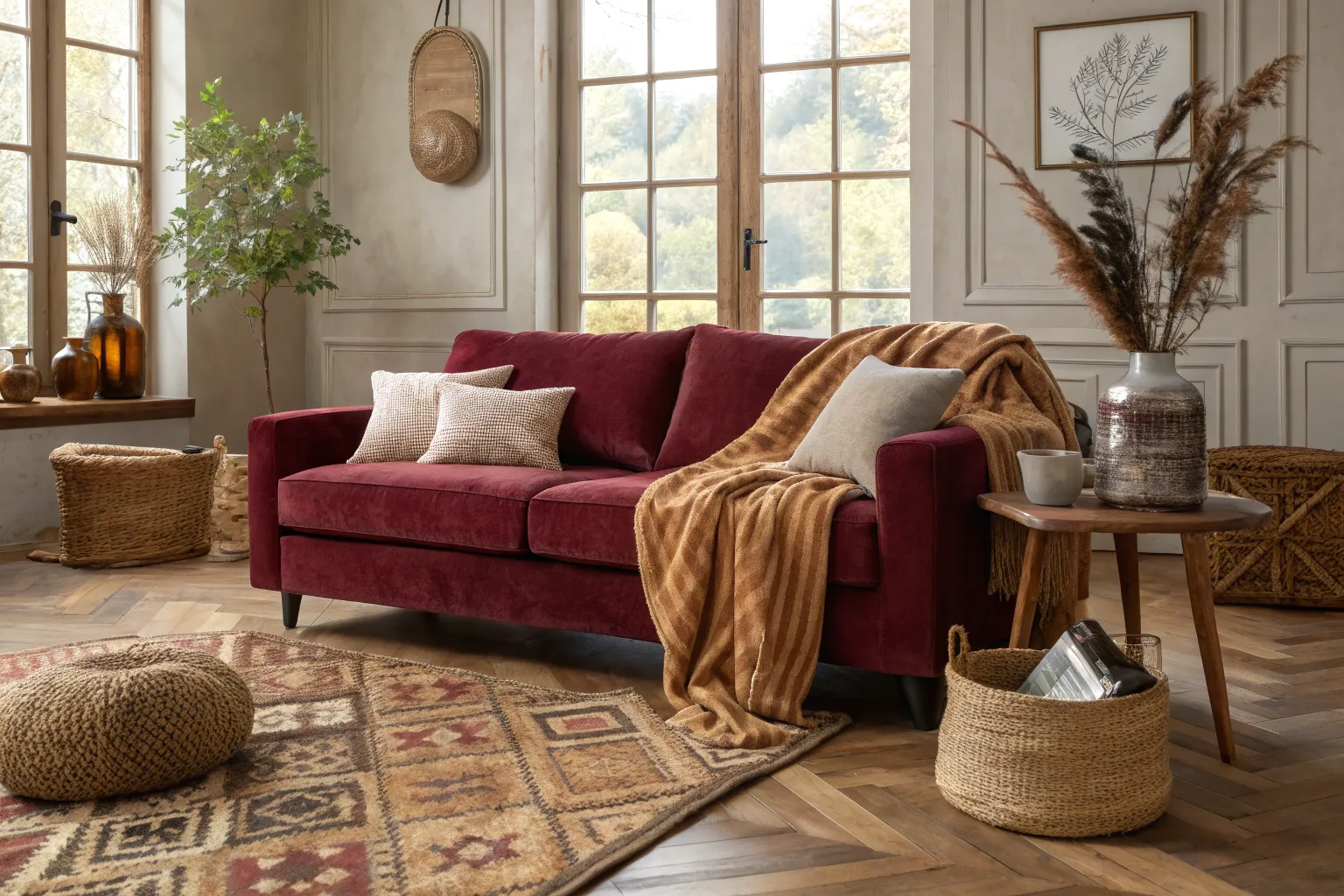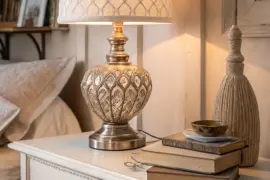Texture speaks a quiet language in our homes, one that moves beyond what we see to what we feel. Learning to orchestrate different surfaces and materials transforms spaces from visually flat to emotionally resonant—and understanding this principle changes everything about how you design.
Understanding Texture: The Foundation of Atmospheric Design

Texture operates on two distinct planes in interior architecture. Tactile texture refers to the physical quality you experience when touching a surface—the coolness of polished marble, the nubby resistance of woven linen, the grain of wire-brushed oak beneath your fingertips. This direct sensory engagement creates an immediate emotional response that profoundly affects how comfortable we feel in a space.
Visual texture, by contrast, is perceived through sight alone. A smooth velvet sofa appears plush and inviting from across the room before you ever sink into its cushions. The play of light and shadow across a rough-hewn stone fireplace creates depth and movement that draws the eye, even when viewed from a distance. Both types work in concert—smooth surfaces reflect light and create brightness, while textured surfaces absorb it, generating warmth and intimacy.
The psychological impact of texture runs deeper than mere aesthetics. Research demonstrates that our brains process tactile qualities through the limbic system, the neural network governing emotion and memory. Soft, plush materials like velvet or faux fur trigger feelings of comfort and security, while harder surfaces such as concrete or polished stone promote a sense of calm order and sophistication. This biological response means texture fundamentally shapes not just how a room looks, but how it makes us feel.
The Science of Material Selection

Natural materials form the cornerstone of textural design because they inherently possess the variations and imperfections that create visual interest. No two pieces of wood exhibit identical grain patterns; marble veining differs from slab to slab. This organic irregularity connects us to the natural world in ways that uniform, manufactured surfaces cannot replicate.
Wood brings unparalleled warmth to interiors through both its appearance and haptic qualities. Different species and treatments yield dramatically different effects:
- Oak presents pronounced grain patterns and structural strength, ideal for floors and substantial furniture pieces
- Walnut offers rich, dark tones that add depth and luxury to cabinetry and accent walls
- Wire-brushed finishes emphasize natural grain by removing softer wood fibers, creating subtle ridges that catch light beautifully
- Reclaimed wood adds historical character while supporting sustainable design practices
Stone and mineral surfaces introduce cool, grounded elements that contrast effectively with warmer materials. Smooth marble provides refined elegance in countertops and vanities, while rough-split slate or granite adds rustic character to accent walls or fireplace surrounds. The density of stone creates visual weight that anchors a space, making rooms feel solid and permanent.
Natural textiles offer the most direct tactile engagement. Linen provides a relaxed, slightly rough texture perfect for casual living spaces. Wool delivers warmth and acoustic dampening in throws and area rugs. Cotton breathes beautifully in bedding and upholstery, while jute and rattan bring organic, handcrafted qualities to floor coverings and furniture. Each fabric choice carries specific thermal and moisture-regulating properties that affect both comfort and atmosphere.
Layering Techniques for Dimensional Spaces

Professional designers approach texture layering with the same rigor applied to color theory. I’ve found the most successful schemes follow what interior architects call the contrast-and-harmony principle: approximately 70% of surfaces maintain textural unity while 30% introduce deliberate contrast. This ratio prevents visual chaos while generating sufficient interest to keep spaces engaging.
Building from the foundation upward creates coherent layering:
Start with flooring as your textural base. A smooth hardwood floor establishes a sleek foundation that pairs beautifully with textured area rugs in sisal, wool, or hand-knotted patterns. Conversely, heavily textured tile or wide-plank wood with pronounced grain becomes a statement element that requires more restrained treatments elsewhere.
Wall treatments provide the largest surface area for textural expression. Smooth painted drywall offers versatility and light reflection, making it ideal for small spaces. Textured applications—from knockdown plaster finishes to wood paneling, shiplap, or dimensional wall panels—add substantial character but absorb more light, creating intimacy suited to larger rooms. Grasscloth wallpaper bridges these extremes, introducing subtle texture without overwhelming spaces.
Window treatments layer soft and structured elements effectively. Combining smooth roller shades for light control with textured linen drapery for warmth creates both functional flexibility and visual depth. The interplay between sheer fabrics that diffuse light and heavier materials that block it entirely allows you to modulate atmosphere throughout the day.
Furniture and accessories complete the textural story. A leather sofa’s smooth suppleness contrasts beautifully with nubby boucle accent chairs. Velvet pillows introduce luxurious softness against crisp linen upholstery. Woven baskets, ceramic vessels, and metallic accents in brass or brushed nickel add final layers of visual and tactile variety.
Contrast Strategies That Work
The most compelling interiors embrace deliberate opposition—pairing rough with smooth, matte with glossy, hard with soft. This juxtaposition creates visual friction that energizes spaces without creating discord.
| Texture Pairing | Effect | Best Applications |
|---|---|---|
| Smooth marble + rough wood | Balances refinement with warmth | Kitchen islands, bathroom vanities |
| Matte plaster + glossy tile | Creates depth through light play | Accent walls, backsplashes |
| Soft velvet + hard metal | Combines comfort with structure | Living room seating, bedroom furnishings |
| Polished concrete + natural fiber | Merges industrial with organic | Modern dining areas, lofts |
| Woven textiles + smooth leather | Adds handcrafted warmth to sleek surfaces | Transitional living spaces |
When working with contrasting textures, maintain color cohesion to prevent visual overload. A neutral palette allows textural variations to emerge as the primary design element. For instance, combining cream linen, ivory wool, and beige jute creates rich layering through texture alone, without competing colors fragmenting the composition.
Scale and proportion matter significantly in texture selection. Large-scale textures—pronounced wood grain, oversized woven patterns, bold three-dimensional wall panels—command attention and work best in spacious rooms where they can be appreciated from a distance. Small-scale textures suit compact spaces, where fine details can be observed more closely and don’t overwhelm limited square footage.
Room-by-Room Application

Living Spaces
Begin with a textural foundation rug—perhaps a chunky jute weave or high-pile wool that defines the seating area. Layer smooth leather or velvet upholstery on your primary seating, then introduce contrasting textures through accent pillows in boucle, linen, or silk. A rough wood coffee table or stone side table adds grounding weight, while metallic lighting fixtures and smooth ceramic accessories provide reflective highlights.
For walls, consider one textured accent feature—perhaps reclaimed wood paneling, textured plaster, or dimensional tile—against otherwise smooth painted surfaces. This creates a focal point without overwhelming the space.
Bedrooms
Bedrooms demand tactile comfort above all else. Build layers starting with smooth, high-thread-count cotton or linen sheets, add a textured coverlet in matelassé or waffle weave, then top with a chunky knit or faux fur throw. Upholstered headboards in velvet or linen introduce softness against walls, while bedside tables in wood or rattan add organic texture.
Window treatments combining blackout Roman shades with soft drapery panels allow light control while maintaining textural interest. Underfoot, place a plush area rug that invites bare feet.
Kitchens and Dining Areas
Kitchens benefit from high-contrast textures that delineate zones. Smooth quartz or marble countertops pair beautifully with textured backsplashes in subway tile, natural stone, or even reclaimed wood. Matte-finish cabinetry provides a sophisticated backdrop for brushed metal hardware and fixtures.
In dining areas, combine smooth wooden tables with upholstered chairs in textured fabrics. A textured area rug anchors the space, while woven placemats and linen napkins layer additional tactile elements onto the table itself.
Bathrooms
Bathrooms offer opportunities for luxurious texture play. Combine smooth porcelain fixtures with textured tile on floors and shower walls. Natural stone vanities or wood accent walls introduce warmth against cool ceramic surfaces. Plush towels, woven bath mats, and rattan storage baskets add soft, organic elements to balance hard surfaces.
Lighting’s Role in Textural Expression

Lighting doesn’t merely illuminate texture—it fundamentally alters how we perceive it. Grazing light (angled light that skims across a textured surface) amplifies every ridge and valley, creating dramatic shadows that emphasize depth. This technique works beautifully on textured plaster walls, three-dimensional tile, or carved wood panels.
Reflective versus absorptive textures respond differently to lighting conditions:
-
Reflective textures (glass, polished metal, glossy tiles, silk fabrics) bounce light throughout a room, making spaces feel brighter and more expansive. They work effectively in small or dark rooms where maximizing available light is essential.
-
Absorptive textures (velvet, wool, matte finishes, rough stone) soften light and create intimate, cozy atmospheres. These materials suit larger spaces or areas designated for relaxation where softer illumination enhances comfort.
The intensity of your lighting profoundly affects textural perception. Bright, direct light emphasizes every surface detail—beneficial for highlighting beautiful materials but potentially harsh on textured walls that create strong shadows. Softer, diffused lighting gentles these contrasts while maintaining textural interest.
Layer your lighting just as deliberately as your textures: ambient fixtures provide general illumination, task lighting serves specific functions, and accent lighting highlights textural features like artwork, architectural details, or statement walls.
Texture in Small Spaces
Conventional wisdom suggests minimizing texture in compact rooms, but this oversimplifies the relationship between texture and spatial perception. Strategic texture use actually enhances small spaces when applied thoughtfully.
Vertical textures draw the eye upward, creating an impression of height. Vertical shiplap, tall wood slats, or striped textured wallpaper elongates walls, making ceilings appear higher than they are. Paint ceilings in lighter, more reflective finishes to further enhance this effect.
Monochromatic texture schemes prevent visual fragmentation that makes small spaces feel cluttered. Using varied textures in a single color family—cream linen, ivory wool, beige jute—creates depth and interest without the visual “chop” that multiple colors introduce.
Reflective textures maximize light in confined areas. A large mirror with a textured frame, glossy tile backsplashes, or metallic accents bounce light around the room, making it feel more spacious. Balance these with select absorptive textures that prevent the space from feeling cold or sterile.
Avoid overwhelming small rooms with large-scale textural patterns. Instead, choose fine-scale textures that add interest without visual weight—subtle grasscloth wallpaper rather than bold three-dimensional panels, for example.
Seasonal Texture Transitions
One advantage of texture-driven design is its adaptability to seasonal changes without requiring complete redesigns. I rotate textural elements throughout the year to maintain fresh, seasonally appropriate atmospheres.
Spring/Summer transitions:
- Replace heavy wool throws with lightweight cotton or linen versions
- Swap plush area rugs for natural fiber alternatives in jute or seagrass
- Exchange velvet pillows for crisp cotton or smooth silk options
- Introduce sheer curtains that filter light softly while maintaining privacy
Fall/Winter transitions:
- Layer chunky knit blankets and faux fur throws over seating
- Add thick wool area rugs over existing flooring for warmth and texture
- Replace smooth cotton pillows with velvet, boucle, or mohair versions
- Hang heavier drapery panels that provide insulation and coziness
These seasonal rotations require minimal investment since you’re primarily changing accessories and textiles rather than permanent installations. Store off-season items in labeled containers for easy access when the time comes to swap them out.
Budget-Conscious Texture Building
Effective textural design doesn’t require unlimited budgets. Many high-impact techniques cost surprisingly little when approached strategically.
Start with paint and technique:
- Textured paint additives (baking soda, sand, or specialized compounds) create dimensional wall finishes at minimal cost
- Limewash paint naturally develops beautiful, cloud-like texture through application technique alone
- DIY stenciling or rag-rolling adds visual texture without expensive wallpaper
Leverage architectural details:
- Simple board-and-batten treatment using inexpensive lumber creates striking textured walls
- Picture frame molding adds architectural texture with basic trim pieces
- Peel-and-stick textured wallpaper offers removable options ideal for renters
Focus on high-impact textiles:
- Thrift stores and online marketplaces yield quality textured rugs, throws, and pillows at fraction of retail costs
- Mix expensive statement pieces (one beautiful wool rug) with affordable basics (cotton throw pillows you can change seasonally)
- DIY textile projects—chunky knit blankets, macramé wall hangings, woven baskets—add handcrafted texture personalized to your taste
Natural elements cost little:
- Branches, dried flowers, and seasonal foliage from your yard add organic texture to arrangements
- River rocks, driftwood, and other found natural objects become textural accessories
- Indoor plants provide living texture that changes and grows over time
Common Pitfalls to Avoid
Even experienced designers occasionally misstep with texture. Watch for these frequent errors:
Texture overload occurs when every surface competes for attention. If your walls are heavily textured, your furnishings complex, your window treatments layered, and your accessories abundant, the space feels chaotic rather than curated. Remember the 70-30 guideline—most surfaces should harmonize while select elements contrast.
Insufficient contrast creates the opposite problem: spaces that feel flat and monotonous despite containing multiple textures. Ensure your textural palette includes both smooth and rough, soft and hard, matte and reflective elements.
Ignoring scale leads to proportional issues. Massive textures dwarf small rooms; tiny textures disappear in large spaces. Match textural scale to room dimensions.
Neglecting maintenance means beautiful textures deteriorate. Textured walls collect dust in crevices, high-pile rugs require professional cleaning, natural stone needs sealing. Choose textures appropriate to your maintenance capacity.
Fighting architectural style undermines coherence. Ultra-smooth, minimalist textures clash with rustic cottage architecture; heavy, traditional textures feel wrong in modern lofts. Let your home’s bones guide textural choices.





